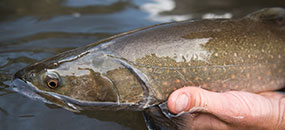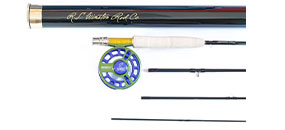Location: Western North Carolina
Type of stream: Freestone tailwater
Angling methods: Fly, Spin
Species: Browns, rainbows, brook
Access: Easy
Season: Year-round
Supporting Services: Sylva
Short take: Doesn’t look like a tailwater at all
Handicapped Access: No
Closest TU Chapter: Tuckasegee
When you drive along the Tuckasegee on U.S. 74 downstream from Dillsboro, the river looks like smallmouth haven. Never in a million years would you guess that what you’re seeing is one of the state’s premier trout rivers. Want to catch big browns and rainbows, this is one place to do it. Sure, they’re hatchery reared. But so what? If wild trout are your pleasure, hie thyself to the headwaters and leave those 20-inch ‘bows to the rest of us.
The Tuck, as it’s fondly called, is North Carolina’s longest trout river. For more than 60 miles it offers anglers of all stripes very good fishing. Amid a welter of steep granite exfoliation domes and deep forest, the river gathers its waters from Panthertown and Greenland creeks. Including the main river down to the Clark property, the headwaters offer 22 miles of catch and release, artificial lures only fishing for wild brook trout. Best access to the upper Tuck is from the Cold Mountain Road. Often termed the Yosemite of the East by hikers and climbers, the Panthertown Valley is rich with well-marked trails.
From the 107 bridge and running down to the site of a former dam at Dillsboro, the Tuck earns its reputation. This is the 5 ? mile delayed harvest section. It’s catch and release, artificials only from October through June 1. Float or wade; your choice. Fall brings hatches of yellow caddis, isonychias, tricos and, of course, midges. Terrestrials are especially good into November. Small blue-winged olives and midges produce through winter. As sun begins to warm the riverbed in March, early black and brown stoneflies come off along with blue quills and quill gordons. April adds Hendricksons and sulphurs to the mix, and as summer picks up various caddis, little sallies and large golden stones come aboard. The lower run of river is interesting from two perspectives. It holds large brown trout and grades into smallmouth water. OK, if you had to choose a 20-inch brown over a 20-inch bronzeback, which would it be? On the other hand, why choose?




